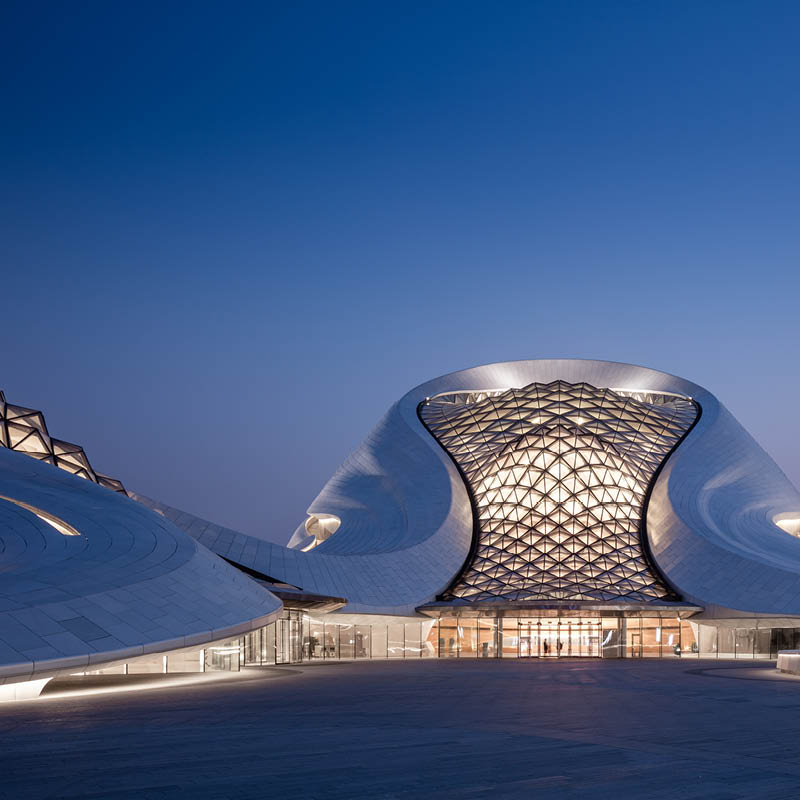Modern Theatres 1950 – 2020
Few theatres were built during the 1940s, with theatre building and rebuilding only really recommencing in the early 1950s. The focus of Modern Theatres is therefore on theatres, opera houses and concert halls built between 1950 and 2020.
There are three parts to Modern Theatres –
- Essays
- Significant theatres that opened from 1950 to 2010
- Snapshots of further theatres that opened between 2009 and 2020.
Essays
Leading thinkers and experts in their fields were asked to write essays on specific topics. These essays cover the architecture, acoustics and technology of modern theatre buildings. They also embrace the role of new performing arts buildings in their communities. In the essays, and throughout Modern Theatres, the word ‘theatres’ is used broadly to include concert halls, opera houses, spaces for dance and other types of performance venue. The essays look back at changes in technology, in architecture, in places for music, etc. since 1950. Several of the essays also speculate on future directions.
Significant theatres – 1950 to 2010
Distinguished architects, theatre people, consultants, etc. were asked to revisit and re-appraise 30 ‘significant’ theatres that opened between 1950 and 2010. ‘Significant’ is a word that emerged after considering and rejecting many other words such as ‘great’, ‘good’, ‘successful’, ‘inspirational’, ‘ground-breaking’ and ‘innovative’.
Theatres, concert halls and opera houses can be ‘significant’ for differing reasons. The Sydney Opera House, for example, is one of the greatest pieces of architecture of the 20th century, but most theatre practitioners know that the Sydney Opera House is one of the most compromised opera houses and concert halls in terms of acoustics, functionality and theatricality. While Sydney Opera House is great architecture, it is not a good opera house, concert hall or performing arts centre. It has had the most profound effect on people’s perceptions of Sydney and Australia.
Some performing arts buildings in this 60-year period have been truly innovative. Before Hans Scharoun’s Philharmonie Berlin opened in 1963, the world had seen and heard classical music performed in traditional, shoe-box shaped rooms like the Musikverein in Vienna or the Concertgebouw in Amsterdam. Scharoun completely reinvented rooms for music. He rejected the shoebox, clustered the audience around the platform and was the first person to coin the expression ‘vineyard’ to describe this new form of room for music. The Philharmonie Berlin is probably the most innovative and inspirational room of this period – with this performing arts space, concert hall design had been truly transformed.
Why start in 1950?
The Second World War brought an almost complete halt to theatre building, as well as the destruction of literally hundreds of theatres, concert halls and opera houses. The year 1950 therefore seemed like a sensible starting point for this work. The first building considered is London’s Royal Festival Hall, which opened on 3rd May 1951.
Why end in 2010?
In evaluating the ‘significant’ theatres, we felt it was important for enough time to have elapsed since the opening to allow a fair evaluation of the building. Russell Johnson, the legendary acoustic consultant, suggested a six-year evaluation period for new theatres:
- Years one and two: everything is wonderful, the pain is finally over. The building has opened. The money has stopped pouring out.
- Years three and four: everything goes wrong. The roof leaks. The artistic director leaves. The deficit is much bigger than anyone thought.
- Years five and six: a fair assessment emerges. Enough knowledgeable people have visited the new building for a balanced evaluation to emerge.
Following this logic, it was decided to focus our attention on theatres that had opened by 2010.
Snapshots of further theatres that opened between 2009 and 2020.
To present a view of current, contemporary developments, Modern Theatres also looks at 20 theatres that opened between 2009 and 2020. These have been reviewed more concisely than the ‘Significant’ theatres, which is not to say that these theatres will not become important or significant – it is merely that, having recently opened, their impact cannot yet be fully appreciated.








